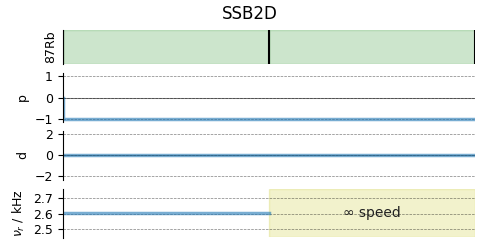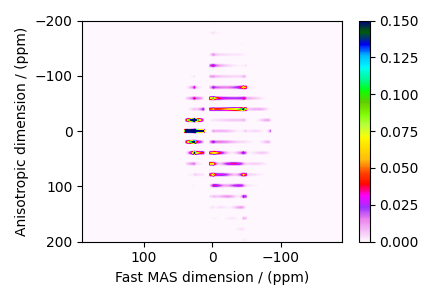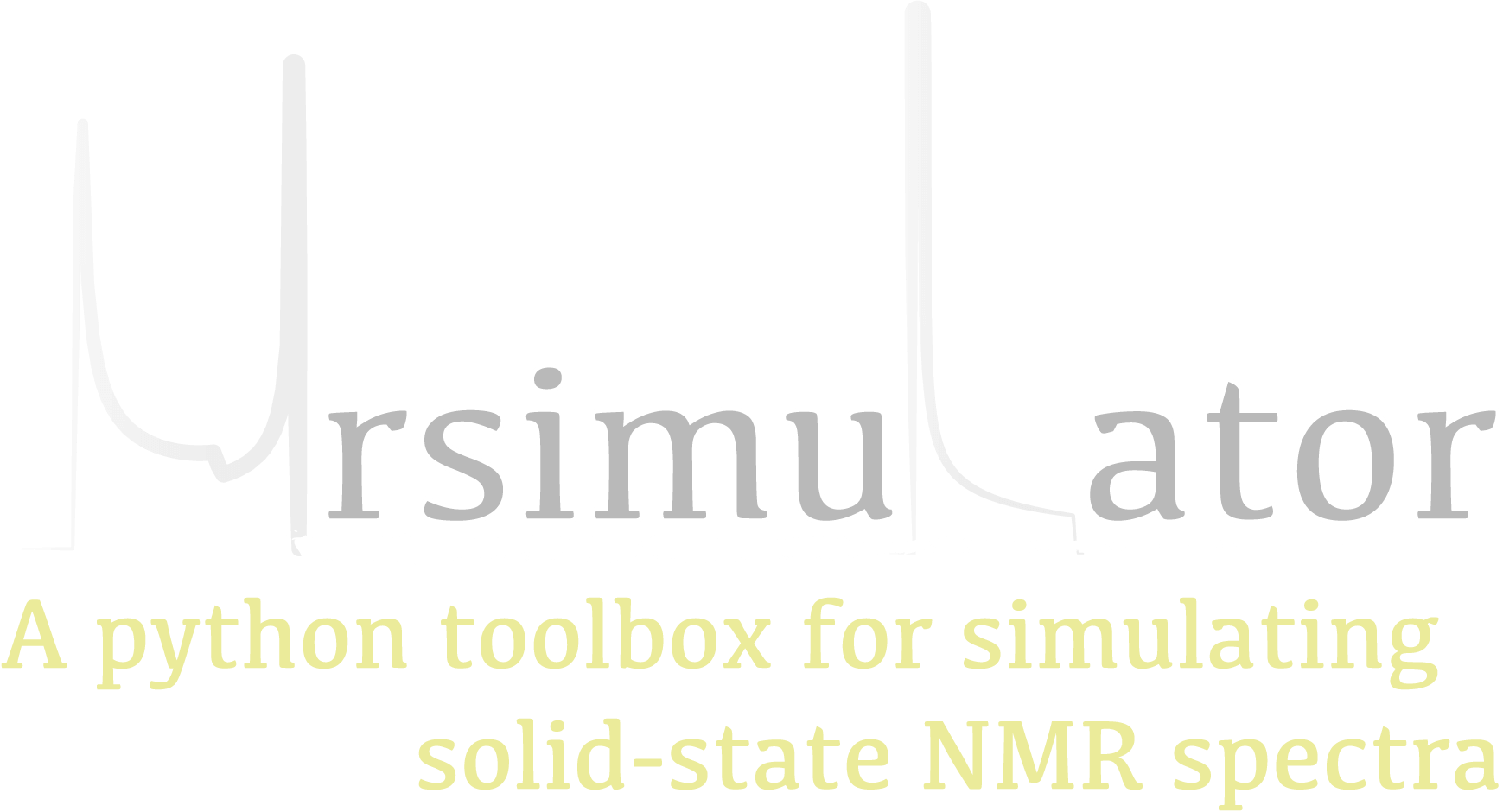Note
Go to the end to download the full example code
Rb₂SO₄, ⁸⁷Rb (I=3/2) QMAT¶
⁸⁷Rb (I=3/2) Quadrupolar Magic-angle turning (QMAT) simulation.
The following is a simulation of the QMAT spectrum of \(\text{Rb}_2\text{SiO}_4\). The 2D QMAT spectrum is a correlation of finite speed MAS to an infinite speed MAS spectrum. The parameters for the simulation are obtained from Walder et al. [1].
import matplotlib.pyplot as plt
from mrsimulator import Simulator, SpinSystem, Site
from mrsimulator.method.lib import SSB2D
from mrsimulator.spin_system.tensors import SymmetricTensor
from mrsimulator.method import SpectralDimension
Generate the site and spin system objects.
sites = [
Site(
isotope="87Rb",
isotropic_chemical_shift=16, # in ppm
quadrupolar=SymmetricTensor(Cq=5.3e6, eta=0.1), # Cq in Hz
),
Site(
isotope="87Rb",
isotropic_chemical_shift=40, # in ppm
quadrupolar=SymmetricTensor(Cq=2.6e6, eta=1.0), # Cq in Hz
),
]
spin_systems = [SpinSystem(sites=[s]) for s in sites]
Use the SSB2D method to simulate a PASS, MAT, QPASS, QMAT, or any equivalent
sideband separation spectrum. Here, we use the method to generate a QMAT spectrum.
The QMAT method is created from the SSB2D method in the same as a PASS or MAT
method. The difference is that the observed channel is a half-integer quadrupolar
spin instead of a spin I=1/2.
qmat = SSB2D(
channels=["87Rb"],
magnetic_flux_density=9.4,
rotor_frequency=2604,
spectral_dimensions=[
SpectralDimension(
count=32 * 4,
spectral_width=2604 * 32, # in Hz
label="Anisotropic dimension",
),
SpectralDimension(
count=512,
spectral_width=50000, # in Hz
label="Fast MAS dimension",
),
],
)
# A graphical representation of the method object.
plt.figure(figsize=(5, 2.5))
qmat.plot()
plt.show()

Create the Simulator object, add the method and spin system objects, and run the simulation.
The plot of the simulation.
plt.figure(figsize=(4.25, 3.0))
dataset = sim.methods[0].simulation.real
ax = plt.subplot(projection="csdm")
cb = ax.imshow(dataset / dataset.max(), aspect="auto", cmap="gist_ncar_r", vmax=0.15)
plt.colorbar(cb)
ax.invert_xaxis()
ax.set_ylim(200, -200)
plt.tight_layout()
plt.show()

Total running time of the script: (0 minutes 0.709 seconds)
